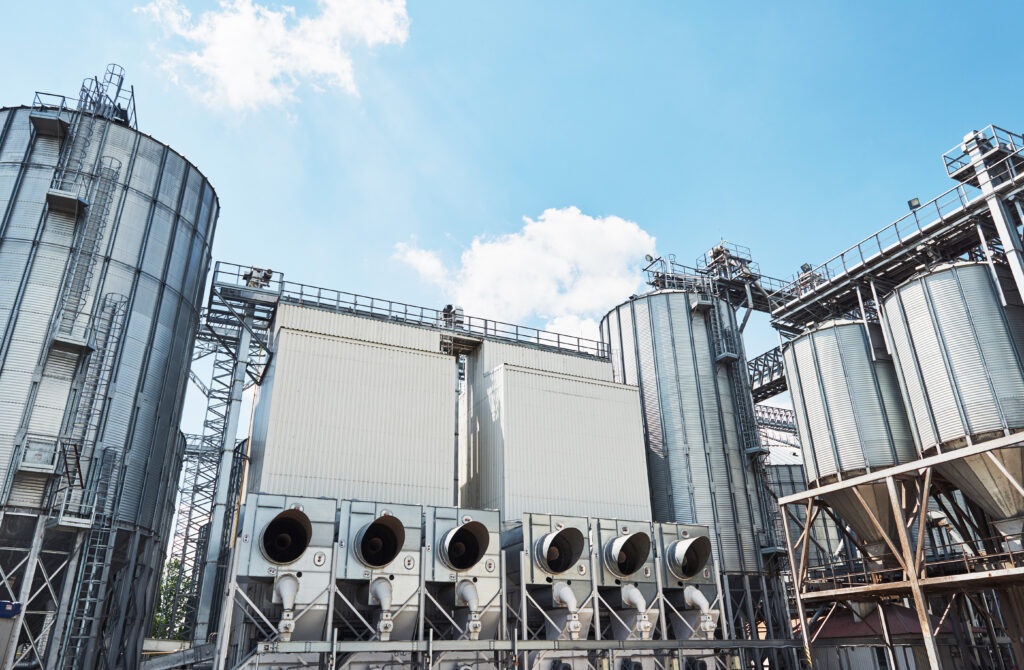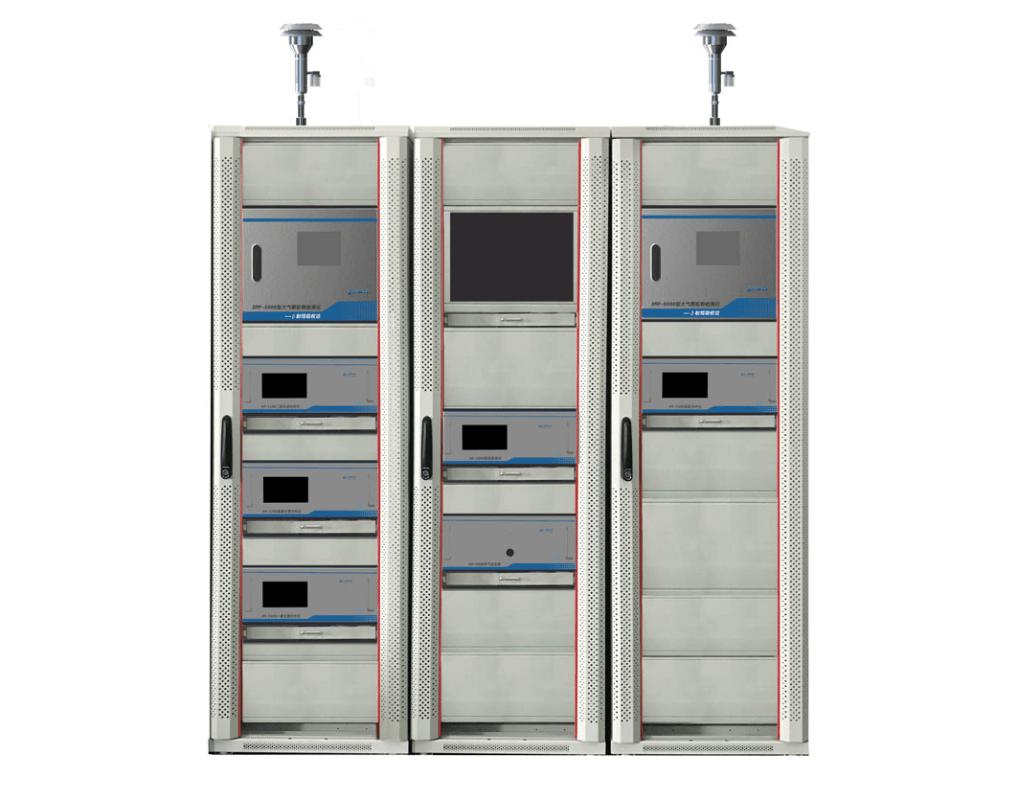Air Handling Systems
Air Handling Units
Air handling units (AHUs) are essential components in air conditioning and HVAC (Heating, Ventilation, and Air Conditioning) systems. They play a critical role in conditioning, filtering, and distributing air within a building or space.
Key functions and components of air handling units in air conditioning systems include
-
Air Intake
AHUs draw in outside air, which is then filtered to remove dust, pollutants, and contaminants before entering the system.
-
Heating and Cooling Coils
AHUs contain coils that are used to either heat or cool the air, depending on the required temperature. These coils transfer thermal energy to or from the air as it flows through the AHU.
-
Humidification and Dehumidification
In some AHUs, humidifiers and dehumidifiers are used to control humidity levels in the air. This is crucial for maintaining comfort and preventing issues like mold growth.
-
Air Mixing and Blower
The AHU’s blower or fan pushes the conditioned air through the system. Mixing dampers control the blend of outside air and recirculated air to achieve the desired conditions.
-
Air Filtration
Filters within the AHU capture particles, allergens, and contaminants from the air, improving indoor air quality.

Fresh and Exhaust Units
Fresh air units and exhaust air units are important components in air conditioning and HVAC systems that contribute to maintaining indoor air quality and overall comfort.
Let’s take a closer look at each of these units
-
Fresh Air Units
Fresh air units, also known as outdoor air units or makeup air units, are responsible for introducing outdoor air into the building’s HVAC system. They play a vital role in ensuring a supply of fresh, oxygen-rich air while helping to dilute indoor pollutants and maintain a healthy indoor environment. Fresh air units are particularly important in buildings that are tightly sealed for energy efficiency, as they prevent stale air from accumulating.
-
Exhaust Air Units
Exhaust air units are responsible for removing indoor air from the building and expelling it outside. These units are essential for eliminating stale air, odors, humidity, and indoor pollutants.

Air Scrubbers
Air scrubbers, also known as air purification systems or air purifiers, are devices designed to improve indoor air quality by removing contaminants, pollutants, and particles from the air. While they are not typically integrated directly into air conditioners, they can complement HVAC systems by enhancing the quality of the air circulated within a building.
Relation to Air Conditioning
-
Relation to Air Conditioning
While air scrubbers are not integrated directly into air conditioners, they can be used alongside HVAC systems to enhance indoor air quality. They are especially useful in situations where HVAC systems recirculate air, potentially concentrating contaminants indoors.

Fan Coil Units
Fan coil units (FCUs) are important components of air conditioning systems, used to distribute conditioned air within a building or space. They are designed to provide heating, cooling, or both, depending on the needs of the environment.
Key features and functions of fan coil units in air conditioning systems include
-
Heating and Cooling
Fan coil units can either provide heated air or cooled air, depending on the desired temperature. They use heating coils and cooling coils to achieve the desired thermal conditions.
-
Air Distribution
FCUs distribute conditioned air to specific areas within a building through a network of ducts or air distribution pathways.
-
Fan
The fan within the FCU circulates air over the heating or cooling coils and into the room or space.
-
Thermostat Control
FCUs are controlled by thermostats that allow occupants to set their preferred temperature. This provides individualized temperature control for different areas.
-
Filtering
Fan coil units may include air filters that remove dust, particles, and contaminants from the air before it is circulated into the space.

High Wall Units
Air scrubbers, also known as air purification systems or air purifiers, are devices designed to improve indoor air quality by removing contaminants, pollutants, and particles from the air. While they are not typically integrated directly into air conditioners, they can complement HVAC systems by enhancing the quality of the air circulated within a building.

Cassette Units
Cassette units are a type of indoor air conditioning unit commonly used in commercial and residential settings. They are designed to be mounted in the ceiling, providing efficient cooling or heating while being unobtrusive and visually appealing.

Blowers
Blowers are essential components in air conditioning systems that are responsible for circulating air through the HVAC system and distributing conditioned air into the living or working spaces. Blowers help maintain a comfortable indoor environment by ensuring that heated or cooled air reaches all parts of the building efficiently. Let’s explore the role of blowers in air conditioners:
Let’s explore the role of blowers in air conditioners
Function of Blowers
-
Raw Water Intake
Pumps are used to draw water from the source (such as rivers, lakes, or wells) into the treatment facility for initial processing.
-
Chemical Dosing
Pumps are utilized to accurately inject chemicals into the water to achieve desired reactions, such as disinfection, pH adjustment, coagulation, and flocculation.
-
Filtration
Pumps help push water through filtration media to remove suspended particles, sediment, and contaminants.
-
Membrane Processes (Reverse Osmosis, Ultrafiltration)
High-pressure pumps are needed to force water through semipermeable membranes to remove dissolved solids and impurities.
-
Distribution
After treatment, pumps are used to distribute the treated water to homes, industries, and other destinations through a network of pipes.
-
Wastewater Treatment
In wastewater treatment plants, pumps are crucial for moving sewage and wastewater through various treatment stages, including aeration, sedimentation, and disinfection.

Types of Blowers
Centrifugal Blowers
These are commonly used in HVAC systems. They use centrifugal force to direct air through the system, making them efficient for moving air against resistance.
Axial Blowers
Often used in industrial settings, axial blowers move air parallel to the axis of the fan. They are efficient for high-volume, low-pressure applications.
Variable-Speed Blowers
These blowers can be adjusted to various speeds, allowing for better control over airflow and energy consumption. They can also enhance comfort by adjusting airflow to meet changing conditions.
Fans
Fans play a vital role in air conditioning systems by facilitating the movement of air, aiding in heat exchange, and ensuring efficient cooling or heating. They are key components that help circulate and distribute conditioned air throughout a building. Here’s how fans are used in air conditioners:
Here’s how fans are used in air conditioners
-
Evaporator Fan
The evaporator fan is located within the indoor unit of the air conditioner, also known as the air handler or indoor blower unit. Its primary function is to circulate warm indoor air across the evaporator coils. As the air passes over the cold coils, heat is absorbed, and the air is cooled before being distributed back into the living or working space. The cooled air contributes to lowering the indoor temperature.
-
Condenser Fan
The condenser fan is found in the outdoor unit of a split air conditioner or heat pump. Its purpose is to expel the heat that is absorbed from the indoor air and transferred to the outdoor unit. As the refrigerant releases heat in the condenser coils, the fan blows outdoor air across the coils to aid in heat dissipation. This allows the refrigerant to return to its liquid state and be ready for another cycle.
-
Ventilation Fans
Some air conditioning systems, especially those in commercial buildings, include ventilation fans that bring in fresh outdoor air and exhaust stale indoor air. Ventilation fans help maintain indoor air quality by introducing outdoor air and preventing the build-up of pollutants and excess moisture. These fans work in conjunction with the air conditioning system to create a comfortable and healthy environment.
-
Air Distribution Fans
In ducted air conditioning systems, fans within the air handler or ductwork help distribute conditioned air to different parts of the building. They ensure that cooled or heated air reaches all rooms, providing uniform temperature control throughout the space.
-
Energy Efficiency and Fans
Modern air conditioning systems often incorporate energy-efficient fan designs and controls to optimize performance and reduce energy consumption. Variable-speed fans, for example, can adjust their speed based on cooling demands, contributing to improved energy efficiency.
Air Distribution Products
Air distribution products refer to a variety of components and systems designed to efficiently distribute conditioned or compressed air in HVAC (Heating, Ventilation, and Air Conditioning) systems, industrial processes, and other applications. These products ensure that air is evenly distributed, properly directed, and effectively delivered to different areas while maintaining the desired comfort, air quality, and efficiency.
Here are some common types of air distribution products
-
Duct Systems
Ductwork is a network of conduits used to carry air from HVAC systems to various spaces in buildings.
-
Supply Ducts
Distribute conditioned air from the HVAC system to different rooms and areas.
-
Return Ducts
Collect and return air back to the HVAC system for recirculation.
-
Ventilation Ducts
Supply fresh air and exhaust stale air to maintain indoor air quality.
-
Diffusers
Diffusers are devices installed at the ends of ducts to distribute air evenly in a room. They come in various shapes and designs and are intended to create a comfortable air environment by reducing drafts and maintaining temperature and humidity levels. Vents and Louvers
-
Vents and Louvers
Vents and louvers are used to control the flow of air and are often adjustable. Louvers can be adjusted to direct air in specific directions or control air volume. .
-
Air Handlers
Air handlers are components of HVAC systems that condition and distribute air.They contain components like filters, blowers, coils, and dampers that aid in air treatment and distribution.
-
Air Curtains
Air curtains create a barrier of high-velocity air across an opening, preventing outdoor air, dust, and insects from entering while maintaining indoor comfort.. .
-
Diffusion Fabric Ducts
Fabric ducts are air distribution systems made of fabric material.They distribute air through perforated ducts, providing even air distribution and improved aesthetics.
-
Underfloor Air Distribution (UFAD) Systems
UFAD systems distribute air through the floor, promoting better thermal comfort and allowing more flexible space utilization.
-
Grille and Diffuser Accessories
Accessories like dampers, plenums, collars, and neck extensions can be used to customize air distribution according to specific requirements. Air distribution products play a crucial role in maintaining comfortable and healthy indoor environments while optimizing energy efficiency. The choice of products depends on the building’s design, usage, and HVAC system configuration. Proper installation, sizing, and maintenance are essential for achieving optimal performance.
Join Us in Our Mission & Vision
Become a part of our journey to get relived from your problems, create experiences, achieve goals. Whether you're an individual looking for product/service or a business seeking product/service, we're here to make a difference together.
